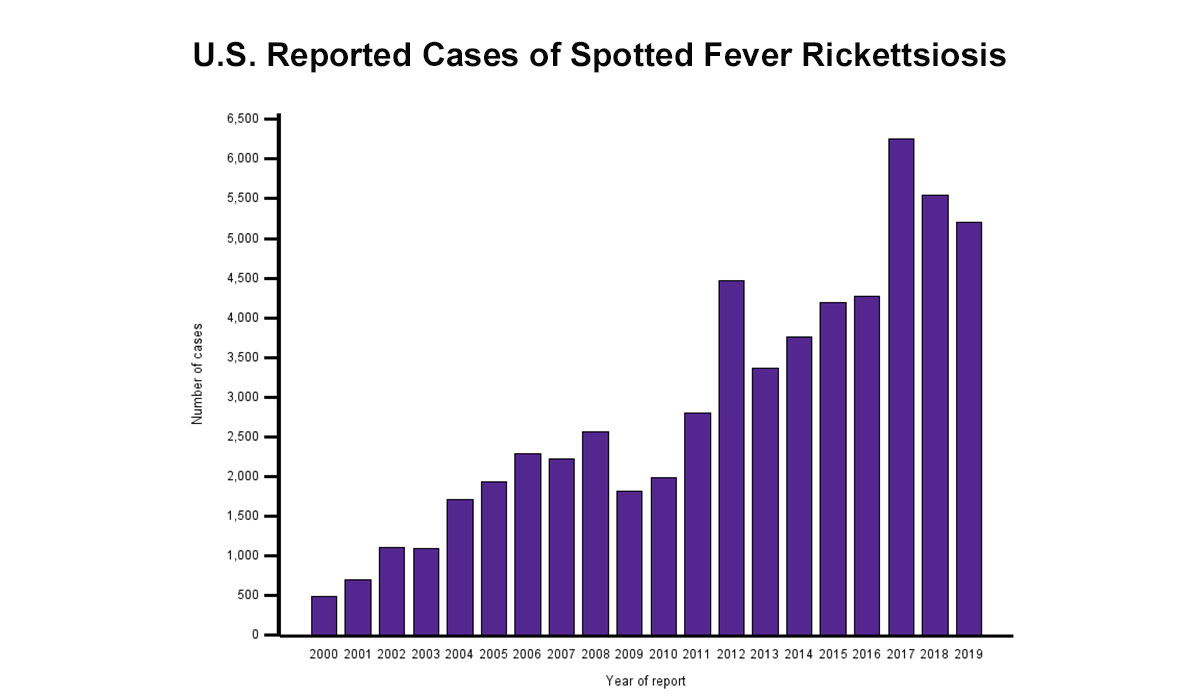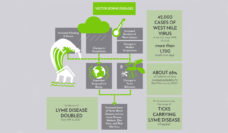Public health awareness can come from anywhere, including Brad Paisley lyrics. He’s on the right path, though his tick-checking ambitions are more about a pickup line than preventing vector-borne illness. Now more than ever, it’s important to pay attention to these little bugs. Tick populations are growing every year, with suburban sprawl and longer warm seasons due to climate change.
Ticks carry a number of diseases that they can pass on to humans and other mammals through their bites. Rocky Mountain Spotted Fever (RMSF) is by far the most severe and fatal of these illnesses. If left untreated, RMSF can be fatal in up to 30% of cases. But with antibiotic treatment, the risk of death decreases to roughly 4%. Symptoms can look like many other less dangerous diseases in the beginning stages–fever, headache, a rash. This can make it hard to identify it. The CDC gets alerted when cases of RMSF are diagnosed, and the cases have been rising across the United States. Sixty percent of cases occur in Arkansas, Oklahoma, Missouri, North Carolina, and Tennessee. As shown in the graph, cases increased steadily from 2000 to 2016. In 2017, cases spiked and stayed relatively higher through the following years. There are a couple reasons for this, excuse us, uptick.
Tick populations are growing due to increasing numbers of warm days. There is spread into new areas with deforestation and development in suburban areas, exposing more people to infection. Finally, there has been an increase in symptom recognition and testing for tick-borne diseases.
With further development of infrastructure and climate change, it’s time to follow Brad Paisley’s example and check your friends and yourself for ticks.
Databye via Centers for Disease Control and Prevention, National Center for Emerging and Zoonotic Infectious Diseases, Division of Vector-Borne Diseases, Figure 1–Number of reported cases of spotted fever rickettsiosis –United States, 2000–2019.














